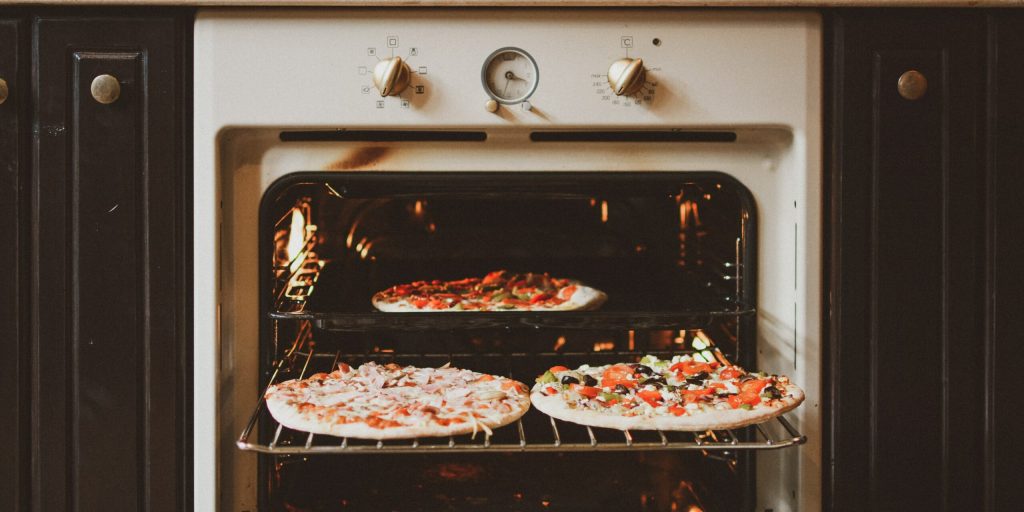Pizza ovens have been getting more and more popular but are they worth all the hype? I’m going to try and break down exactly how you can decide the best option for you in your journey to make better homemade pizza.
The number one factor that separates a standard convection (fan) oven with a pizza oven is HEAT! Your home oven will probably reach temperatures around 250C (482F) using every ounce of energy it can muster. The perfect temperature for a pizza oven is around 380C (718F). With such intense heat, you should have a perfect pizza ready in about 3 minutes, however, if you stick with a convection oven you are looking at more like 10-15 minutes!
Another thing to consider is which type of pizza you’ll be cooking, in this article we mostly cover a Neapolitan style pizza but sometimes a pan pizza cooked in a convection oven is a much simpler option.
Why Does A Pizza Oven Need To Be So Hot?
You need your Pizza oven to be hot so that the dough gets crispy as quickly as possible without. Not hot enough and you’ll end up with a sloppy mess, or have to leave it for so long it ends up baking and drying out the dough. This would leave you with a brittle pizza with burnt cheese! Not ideal.
Tip: I always use an infrared oven thermometer when cooking to test the temperature for any type of oven.
Does any of this impact the flavour?
100%, Yes. Ideally, if you have made great pizza dough, you want to be able to taste the fermentation in the dough, especially if you have been working on the dough for longer than a few hours!
Cooking Pizza in a convection oven
If you still don’t feel like investing in a dedicated pizza oven, then there are a few tips for getting the best pizza out of your oven.
Tips for cooking pizza on a convection oven:
- Use a pizza stone
Using a pizza stone will help you to transfer heat quickly to the dough speeding up the cooking process. This is great but you will need to heat the oven up for at least 15 minutes with just the pizza stone to ensure you have a consistent temperature. - Set your oven temperature to max
Turn your oven up as high as it will go, just make sure you have removed any other trays before doing this and your oven is nice and clean. A dirty oven will taint the flavor and could cause smoke. - Don’t use foil when cooking a pizza
The foil reflects the heat and even under a pizza it will significantly reduce the temperature of the base and this can cause soggy pizza. Although it’s nice to have less washing up it’s really not worth it! - Getting the pizza out of the oven
You’ll probably want to use a pizza peel to make sure you don’t burn yourself, but these do work best when the bottom of the pizza is nice and crispy.
Note: These tips are all for pizza dough, if you have a shop-bought pizza then stick to the manufacturer’s instructions or you could end up with some pretty burnt cheese.
Benefits of cooking pizza in a convection oven
There are still some benefits to cooking pizza in both a conventional or convection. First of all, most of us already have access to an oven, and in your journey to cook homemade pizza, the oven shouldn’t make you give up. The fact that you are even cooking and not reaching for a slice of takeaway pizza should be an achievement in and of itself. This can make it cheaper and more convenient.
Secondly, with the temperatures being a lot lower cooking with a traditional oven is generally a lot safer than working with an open flame.
Finally, your time, if you have a busy schedule it can be a lot of work to come home and light the fire in a wood fired oven.
Final thoughts
A dedicated pizza oven is a way forward for an authentic Neapolitan or New York style pizza, and you’ll never be able to recreate the charred burnt flour crust you get from a wood-fired pizza oven, but with a decent pizza stone and a convection oven, you’ll be well on your way to creating great homemade pizza.
